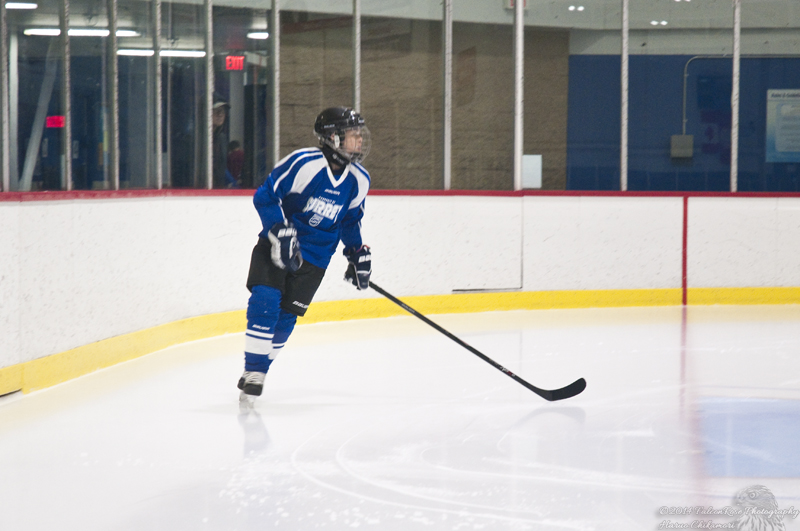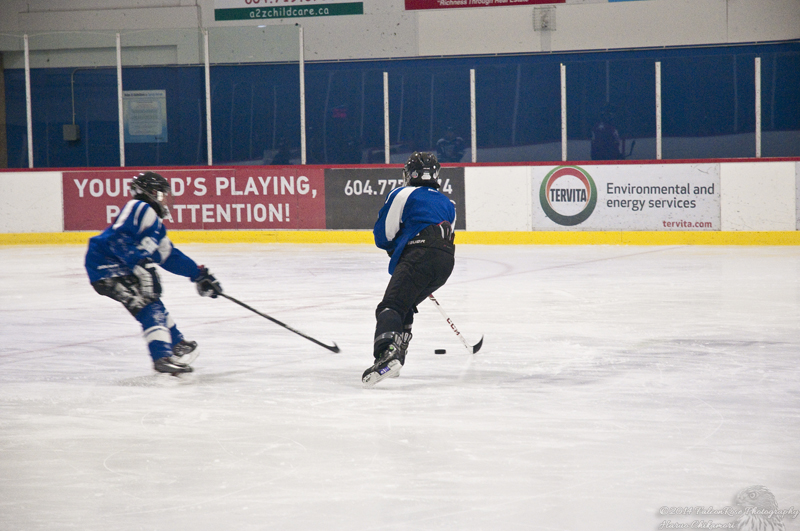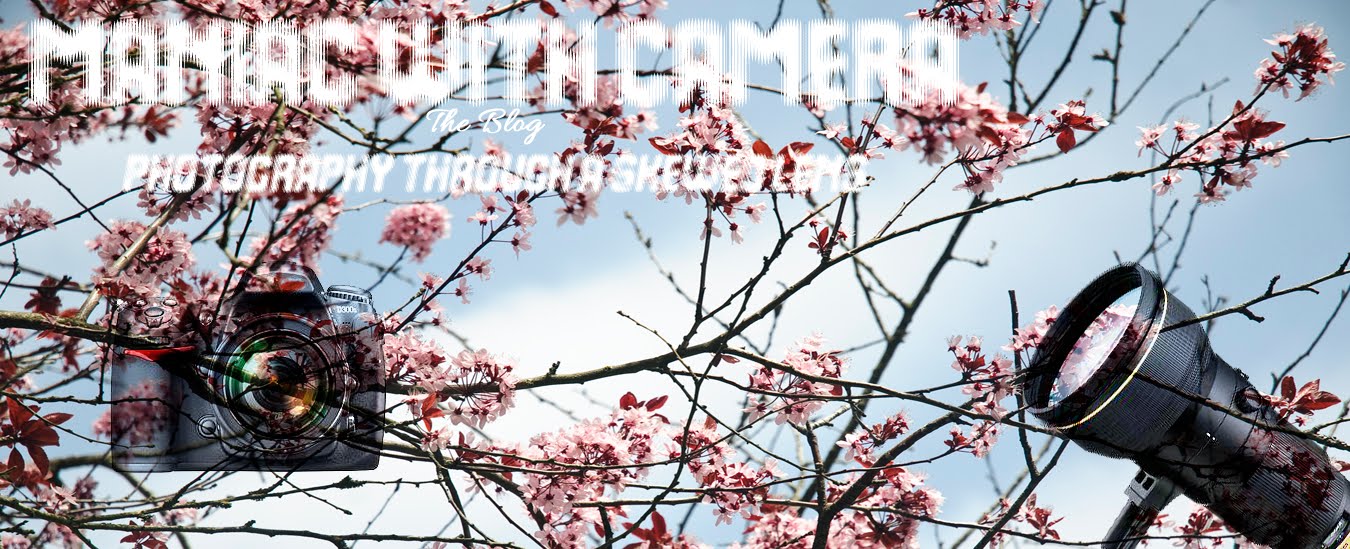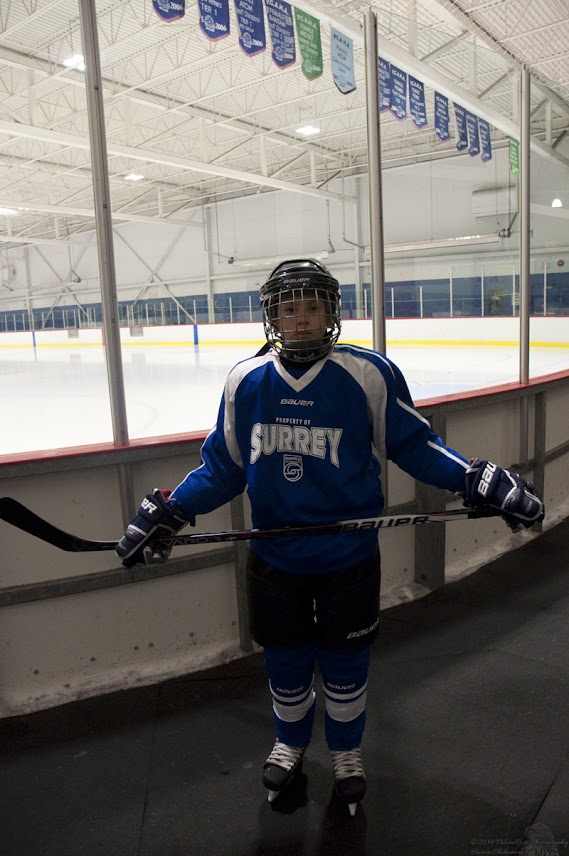Been an interesting couple of weeks shooting hockey photography at the various rinks around Surrey, BC. Shooting hockey wide-angle with the AF-S DX 18-70mm f/3.5-4.5 is a challenge, however it can be done, though I would more than recommend a faster lens (f/2.8 or faster an absolute must if you are shooting professionally - selling your photos). You have to have at least 1/350th of a sec or higher to effectively freeze on-ice action if you are shooting 18-70mm. I was at ISO2500 and I still at 70mm could not get up to anything more than 1/125 sec. The 1.5x rule (You do not handhold at shutterspeeds of 1.5x the maximum focal length of the lens you have on your camera (for example if you have a 200mm lens, you should have a shutterspeed at least 1/350th of a sec or faster)) doesn't apply in this case. Shooting at anything under 1/350th of a sec while shooting indoor fast sports like hockey is a game of hit and miss. Hockey is a fast sport and anything under 1/350th of a sec will run the risk of blurring your photo.

(above photo)This is why you do not shoot 1/125th unless you're braced against the stanchion. And in this case the blur was because of the moving players not because of unsteady hands. In this case the only thing that would have helped was a higher ISO and shutterspeed.
Make no mistake...this kind of thing happens quite often - just check out Scott Kelby's blog where he had the Professional Hockey Photo Workshop and see the photo especially where one of the workshop participants got his Canon 70-200 f/2.8 front lens element smashed to absolute bits. There's hardly any glass there any more.

Make no mistake, I love hockey. Hockey has become a passion to photograph, especially since I have a regular opportunity to do so with my son playing hockey at the minor level. The camera opens up a lot of opportunity to talk to other parents and they all are interested in how you perceive their child's ability to play the game...and the best shots I've taken are the ones where the players are engaged in shooting the puck or when two players are scrimmaging with one another. These shots showcase the player's ability. Not only do I shoot the games, I shoot the practices. These are where I pick up the one on one shots, where the players are working on skating and shooting technique one on one against a goalie. Positioning oneself behind the net gives you those "active goalie" shots where you see a player firing a puck at the goalie.

Most photographers when they shoot hockey photography, they station themselves in one good spot - let's say the opponent's blue-line or the home-team's blue line and wait for the action to come to them. In the NHL you don't have the flexibility of moving around during the game (except during intermission). Because frankly put, you're blocking people's view of the game if you move during the course of the game action and people have paid good money to plunk their butts in their seats. Moving during the game is also a good way to ensure you never shoot another NHL game again. Whereas in minor hockey games...you're able to move quickly between location to location in search of the best shot. But most of the time during the minor hockey games I pick one or two good solid locations, and pick and choose my shots confining them to whereever there is significant action going on. Sometimes parents will want to see what their son does, and there if there's a lull in the action I'll start picking shots around the periphery players. You develop a sense of who the hardnosed "quick to jump into the action" players are and end up focusing on them because that's where the action develops. My son is one of those players and he's plays two-way hockey and defends hard when he's placed into the unenviable position of having to play defence as there's a shortage of players "wanting to play defence".

In a game situation, think out your position before the game. Where do you think you're going to get the best action shots? Position yourself there. In this mornings practice, I stationed myself mostly along the blue-line. where I could position myself to get the attacking players as they moved in on net. Then as the drills progressed, I maneuvered to behind the goalie's net at a 30 degree angle off-set to capture the players moving in from a goalie's perspective.

This shot was at 1/125th of a sec and you can see the player is blurry, though the goalie is not. This is an example of a shot I keep because it tells a story and shows the action behind it. Hockey is a fun sport to shoot and it helps to learn the techniques behind it. I'll go more into the equipment of what I use to shoot my son's games in another post and what I would recommend for those who have the money to do so. The fast lenses are on my "must get" list and as such they will be in my camera bag within the next year. The hallowed fast lens triumvirate: the Nikon AF-S 70-200mm f/2.8 VRII which I already have): the AF-S 14-24mm f/2.8 ultra wide-angle; and the AF-S 24-70mm f/2.8 will follow shortly thereafter - is an absolute must (mine will be doing double duty as both sports photography lenses and landscape photography lenses). I will go into more detail later and when I get those two lenses and shoot a game with them, I will post yet another entry to show just exactly the change from a 14-24/24-70 combo versus a 18-70mm lens.
Happy Shooting.

















